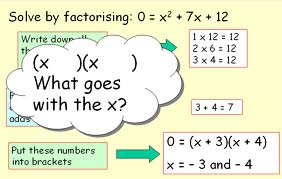Overall, I enjoyed my blogging experience, although the initial stages of setting-up the blog were challenging. As a novice blogger, everything was trial, error and experimentation for the first couple of weeks. However, I eventually got the hang of the basics, and the process wasn’t as daunting. In hindsight, the site is actually very user-friendly. I learned a lot from reading my classmate’s blogs, and from the other math blogs I began to follow, after perusing the entire site. I am grateful I was encouraged to explore the world of blogging; the experience was very beneficial as a student and a teacher.
If it weren’t a requirement, I would have never started a blog, and it is very unlikely that I will continue to post information any time soon. However, I do plan to continue to follow others blogs, and use them as ancillary resources. My primary reason for not continuing to post blogs is time. For instance, this year my school district is mandating us to create websites, and post our grades, lesson plans and homework on-line. Considering I am not very technologically savvy, I am still trying to adapt to the new requirements listed above. Therefore, blogging, for me, would just be another item added to a very long list of “technological things to do.” I do believe I can up-load my blog to my website, however. If this is true, I am definitely inclined to up-load my current blog, although I don’t anticipate up-loading a new post.
As a result of my blogging experience, I learned that writing about math was more challenging than “doing math.” For example, sometimes the writing process was time consuming, because I am not accustomed to articulating procedures in writing, and formulating my own definitions. Since my mathematical education involved rote memorization, I was never asked to summarize my mathematical knowledge, and construct my own meanings; therefore, this was a new experience, and I never imagined it would take me as long as it did.
I entered this course confident I was adept at Middle School Math. However, the blogging experience made the math more interesting, because it gave me the opportunity to explore, analyze and communicate in my own way. For example, whether I used blogging to explore Pascal’s Triangle, write a review about the Puma Site, or merely paraphrase vocabulary, the math became more interesting, because the requirements extended beyond merely “doing math.” As a result, I am now inspired to allow my students to conduct more internet explorations, so they can discover something new and interesting that extends beyond the textbook and the classroom.
For example, one of the most interesting concepts I learned about in this course was fractals, and other non-linear patterns. Although I’ve heard of fractals before, I never explored the concept to gain an understanding of what they really were. However, once I conducted my own research, I was pleasantly surprised to see the plethora of fractals that can be found just about anywhere, including inside our own homes, as well as in nature. So much time is spend trying to get students to understand linear patterns, tables and equations, that non-linear patterns become secondary. Therefore, it was intriguing to see all the non-linear patterns we overlook, although we’re surrounded by them every day.
In the near future, I would love to incorporate blogging into my classroom. My students are already required to journal bi-weekly; however, I would love to introduce blogging to provide them with a different alternative to writing in a marble notebook. Since students love to work on the computer, although they loathe writing, I think blogging is a unique way to pique their interest, and increase their writing and participation. It’s also a great way to have students share and exchange knowledge with their peers. I wouldn’t be surprised if my students know more about blogging than I do; I am confident they will be eager and motivated to began the process. Their motivation may actually inspire me to continue my own blog.

